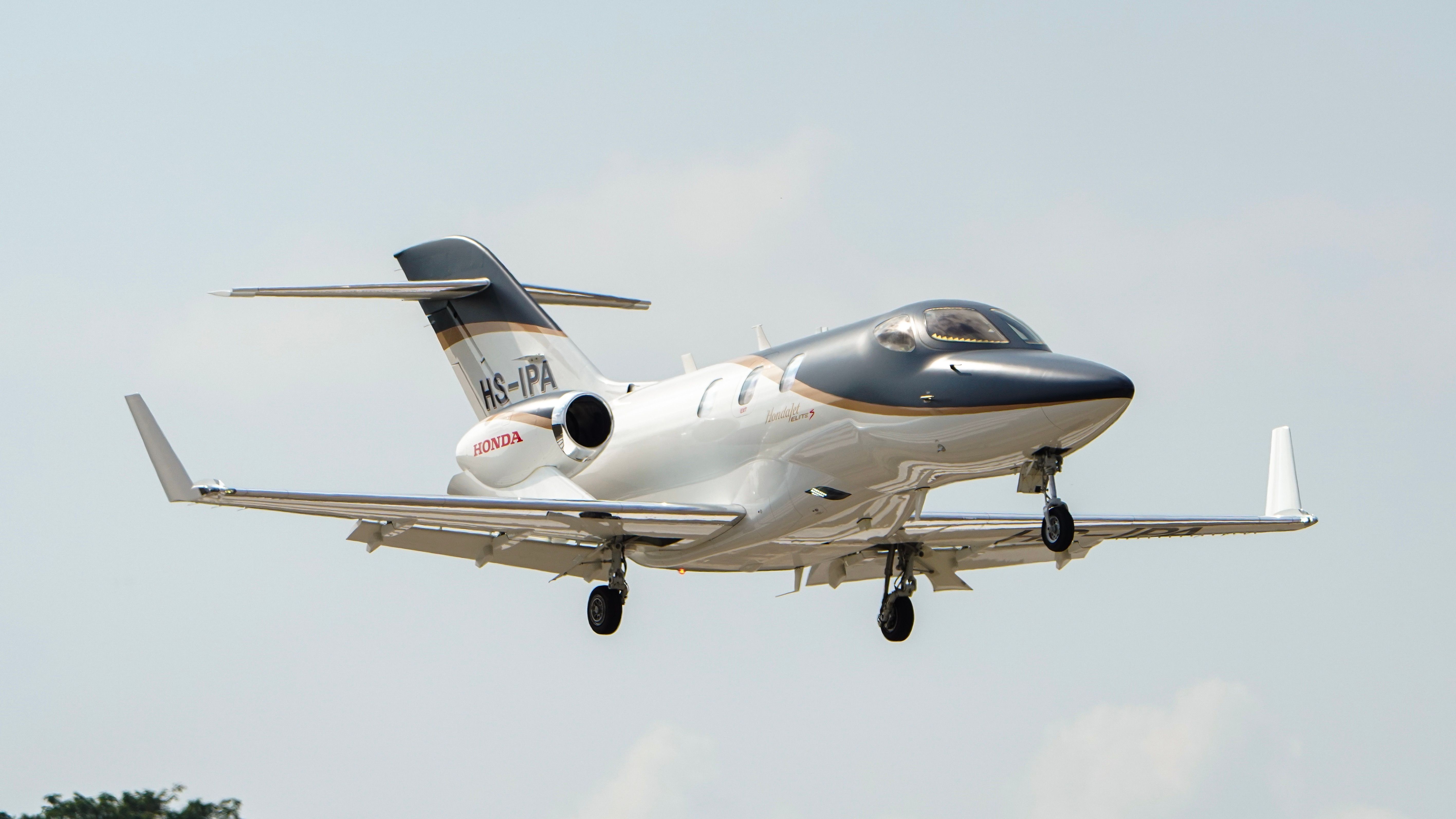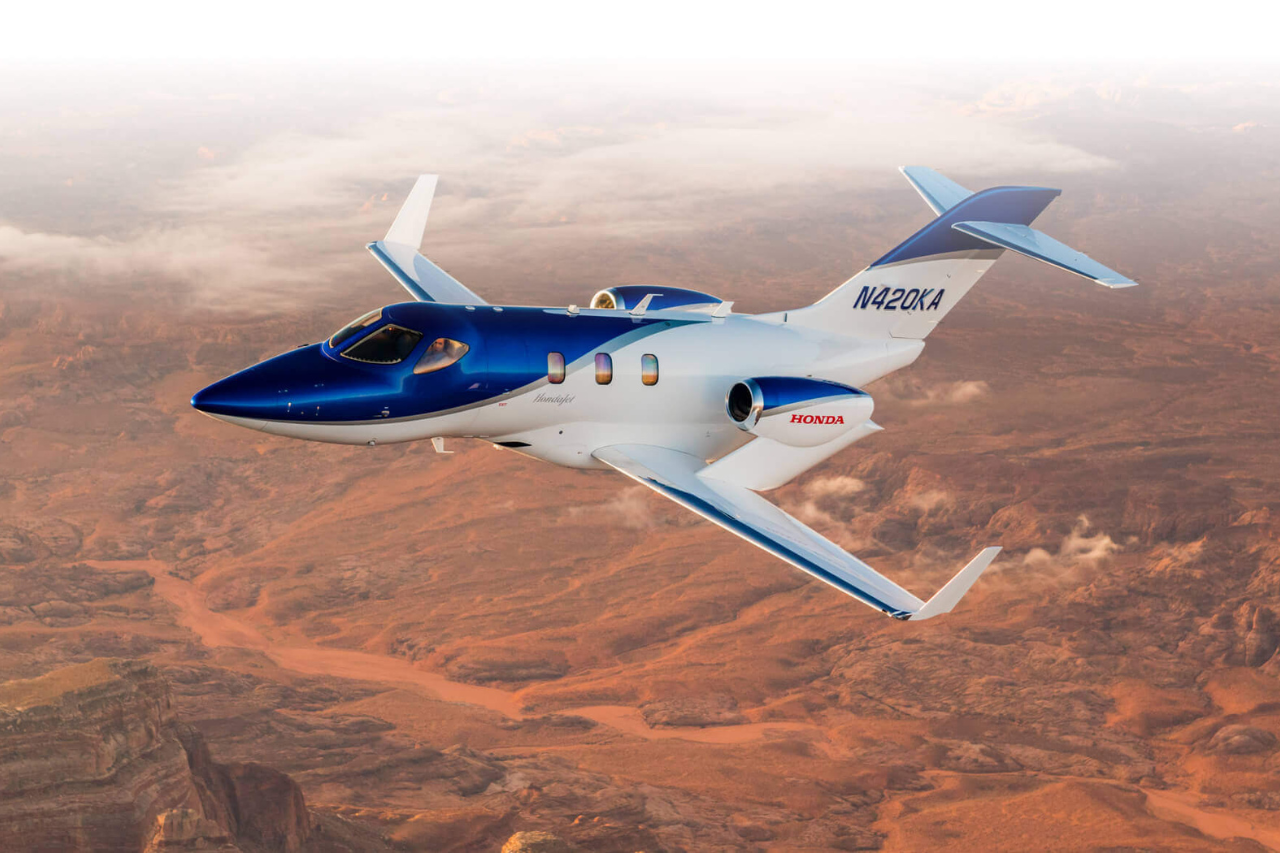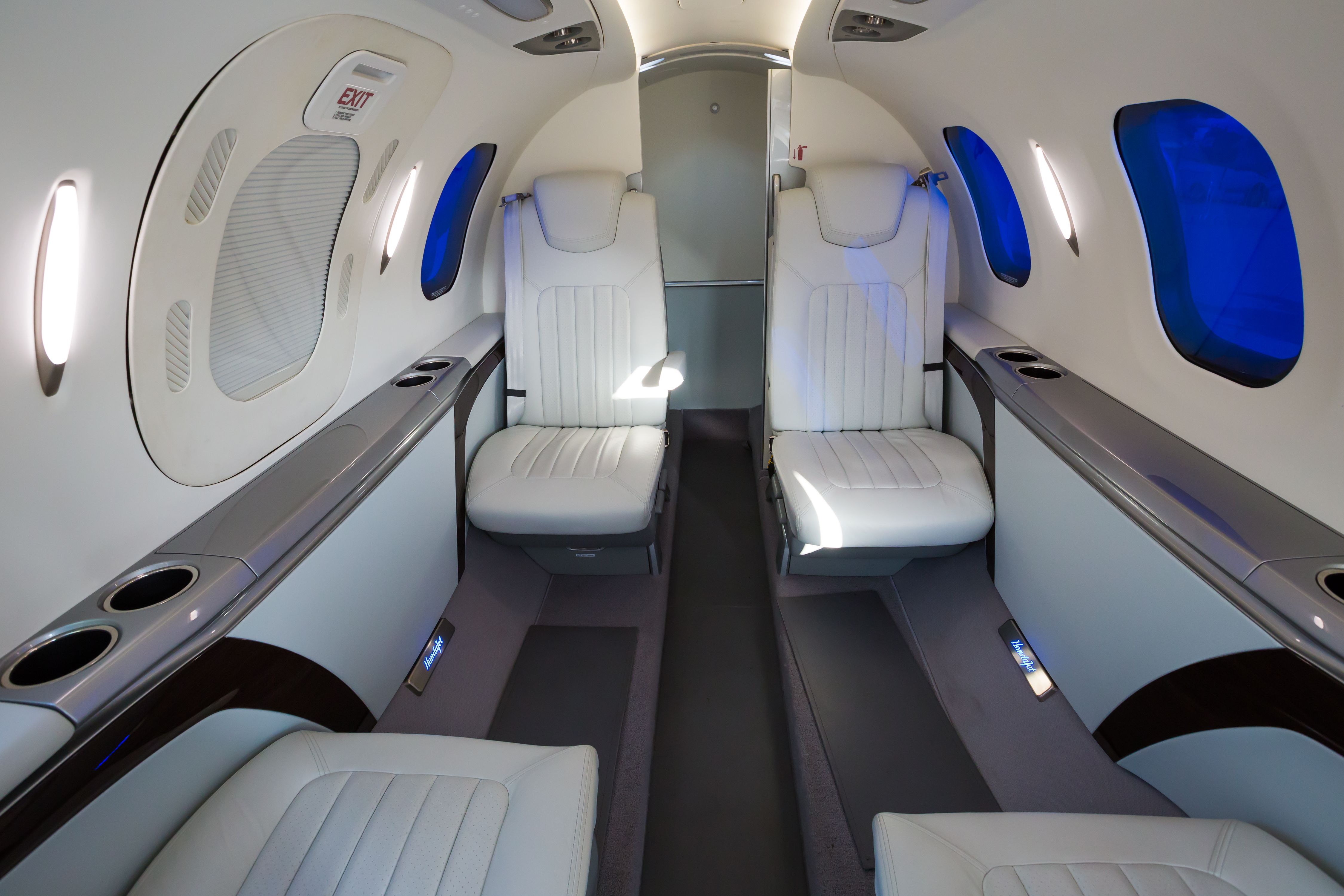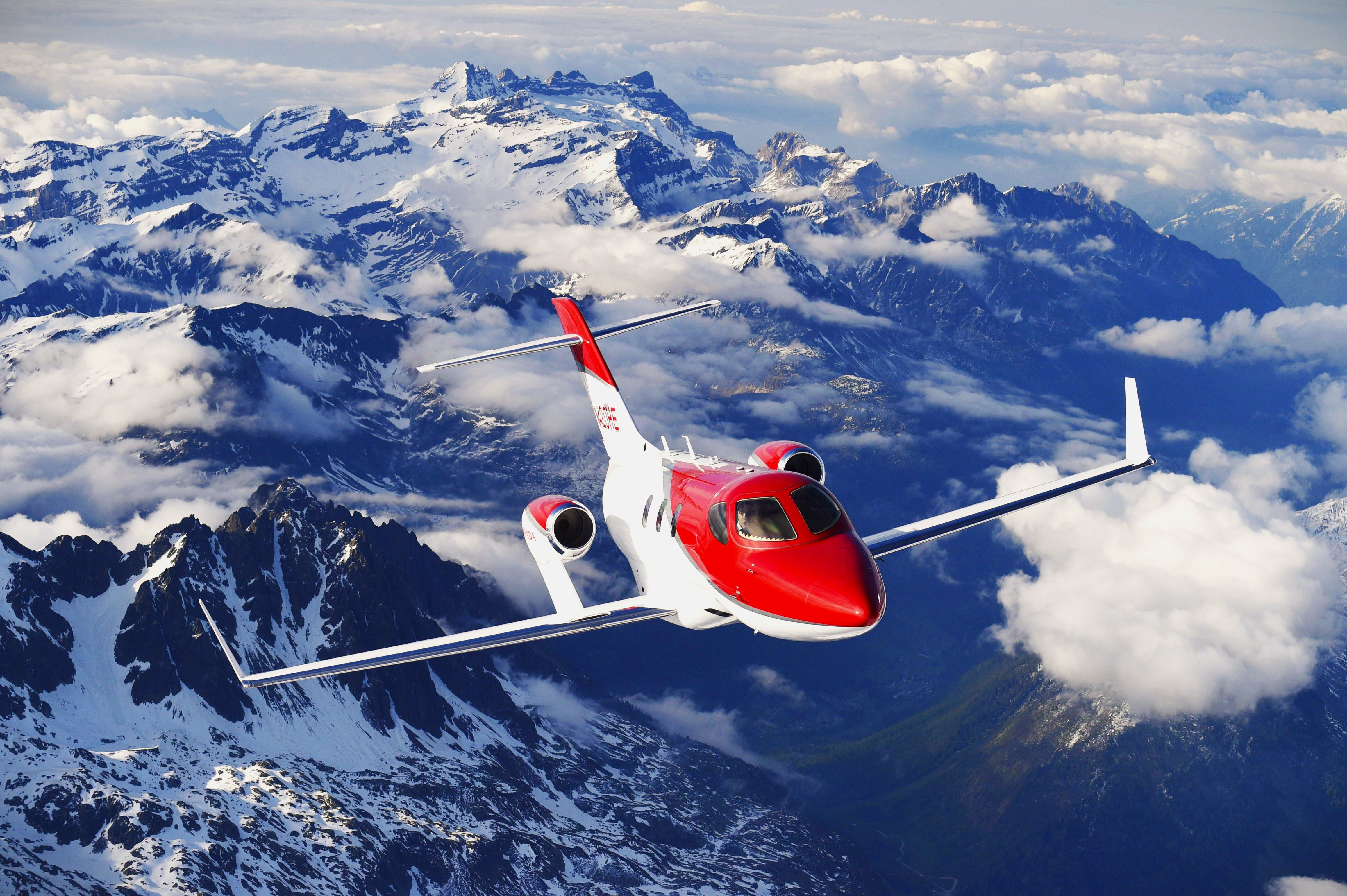Summary
- The HondaJet HA-420 boasts high speeds and long-range cruise capabilities essential for cross-country flights and regional connections.
- The aircraft showcases a lightweight and efficient design by employing composite materials throughout both the airframe and engines.
- The unique Over-The-Wing Engine Mount (OTWEM) design improves aerodynamic performance and cabin space, enhancing engine speed and climb rate.
The HondaJet HA-420 is a light business jet designed and developed by Honda Aircraft Company in the late 1990s. It performed its maiden flight in December 2003, received its FAA certificate in December 2015, and the first production aircraft was delivered that same month. As of February, the manufacturer had delivered over 250 examples of the light corporate jet.
Speed and range
- High-Speed Cruise: 422 knots (485 mph, 776 km/h)
- Long-Range Cruise: 356 knots (410 mph, 655 km/h)
- Max Operating Speed: 422 knots (485 mph, 776 km/h)
- Range: 1,223 NM (1,407 miles, 2,256 km)
Photo: Bluebearwing | Shutterstock
Since its introduction in 2015, the aircraft has been acclaimed for its dispatch reliability and in-flight performance. The aircraft has a maximum operating speed of 422 knots (485 mph, 776 km/h) and a long-range cruise speed of 356 knots (410 mph, 655 km/h). The HondaJet HA-420 can fly a range of up to 1,223 NM (1,407 miles, 2,256 km), which is ideal for cross-country flights and connecting regional bases. According to the PrivateJetCardComparisons,
*’It can seat up to five passengers in the cabin and has a maximum cruising speed of 422 knots (486 mph). The aircraft is powered by two GE Honda HF120 turbofan engines, each providing 1,885 pounds of thrust.”
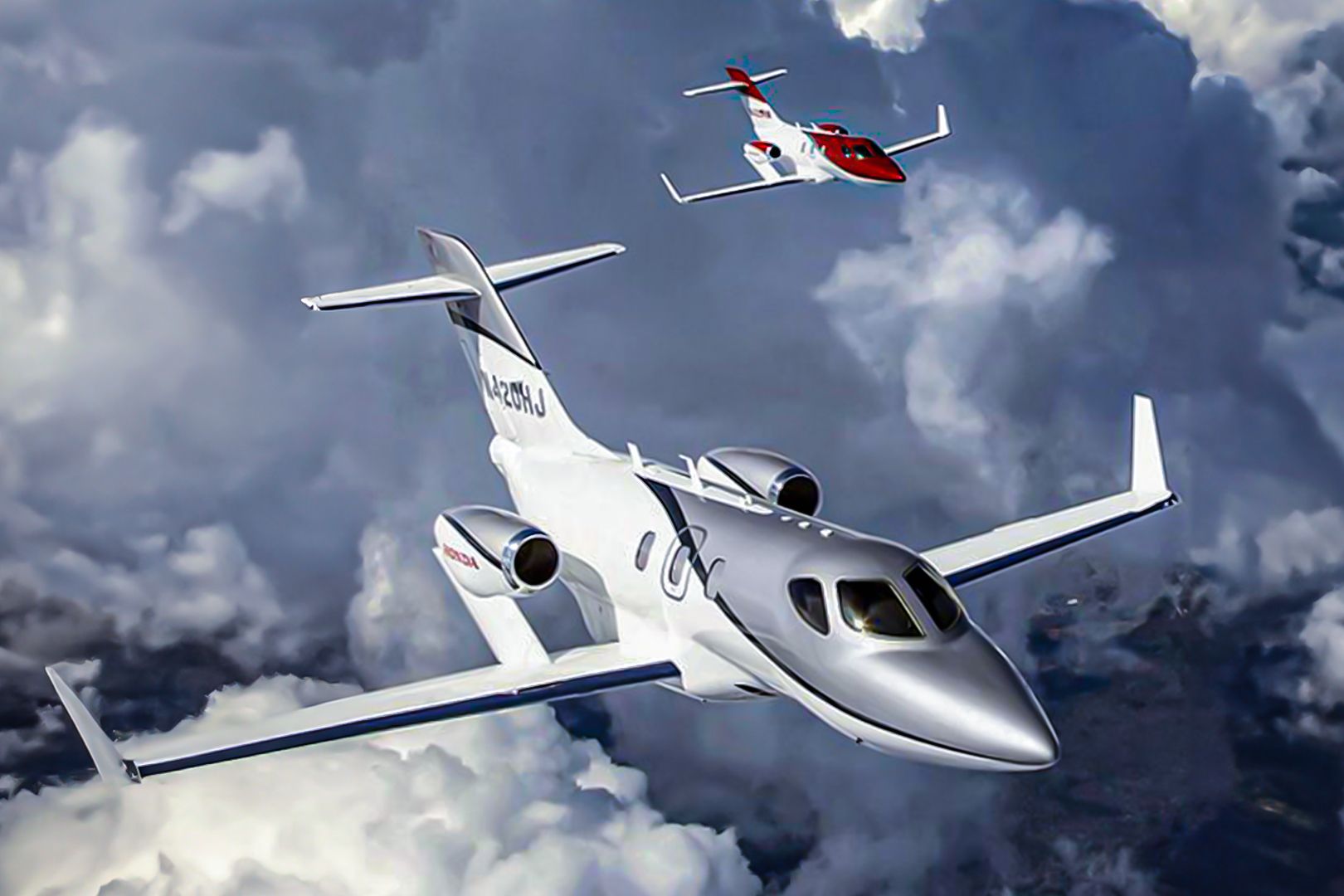
Initial Service Issues: The Story Of Jet It Grounding Its Fleet Of HondaJets
A strange case.
Composites all around
- Length: 42 ft 7 in
- Height: 14 ft 11 in
- Wingspan: 39 ft 9 in
- Maximum gross weight: 10,600 lb (4,600 kg)
- Baggage capacity: 66 cubic ft
The Honda Aircraft Company is true to its “Honda” brand of efficiency and durability. The aircraft
features the use of advanced composite materials throughout the airframe and engines. Whether it is the fuselage structure or the engine fan, the use of composite materials enables a lightweight and efficient design.
Photo: Honda Aircraft Company
The manufacturer claims that it is the combination of fuselage and wing design (translating to superior aerodynamic performance through the reduction of drag), lightweight composite materials, and efficient HF120 engines that gave the HondaJet up to 20% better fuel efficiency than other aircraft in the similar category. According to GE Honda Aero Engines, a joint venture of GE Aerospace and Honda Aircraft Company,
“The engine represents decades of research and development. A wide-chord, swept titanium blisk fan with composite fan outer guide vanes and the use of innovative turbine blade and combustor materials are just some of the unique features the HF120 brings to the light jet market.”
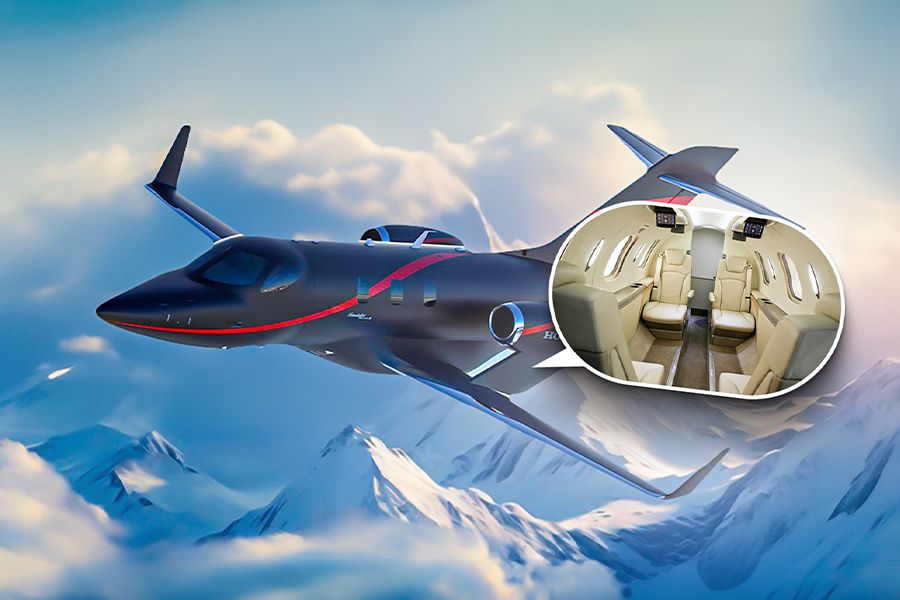
5 Unique Features Of The HondaJet’s Interior
Honda is a pioneer in passenger comfort and elegance.
The over-wing engine configuration
- Takeoff distance over 50-ft obstacle: 4,000 ft
- Rate of climb sea level: 3,990 fpm
- Service ceiling: 43,000 ft
- Landing distance over 50-ft obstacle: 3,050 ft
Speaking of the ultra-efficient engines, it is important to highlight the unusual power plant configuration Hendadet has adopted. Conventionally, most aircraft either have engines installed under the wings or attached to the rear fuselage (mostly used for business jets). The Honda Aircraft Company took a “spin” on the conventional design to feature two engines mounted on pylons above the wing.
The Over-The-Wing Engine Mount (OTWEM) reduces drag in flight, as the manufacturer claims, and maximizes cabin space. The fuselage structure required to mount engines on the rear is removed, making the cabin space more spacious with an additional baggage area.
Photo: M101Studio | Shutterstock
Notably, the OTWEM configuration has been used in the past on the VFW-Fokker 614 but has limited the aircraft performance due to excessive interference drag. The HondaJet design was aimed at achieving substantial cruise speed while also achieving competitive fuel efficiency, and hence, extensive use of digital technologies, including computational fluid dynamics (CFD) simulations and wind tunnel testing, was carried out.
Based on the findings, the manufacturer opted for an optimal position, determined to be approximately 75% of the wing chord, to place engines. The engine performance, coupled with its placement on the aircraft, provides the optimal speed and the best rate of climb. According to GE Honda,
“The fastest engine in its class, the HF120 enables effortless climb to FL450 and beyond. Its high fan and core pressure ratio provides increased aircraft speed and reduced climb time to higher cruising altitudes. With a low thrust lapse rate, the engine allows for best in class initial climb nearing 4.000 feet per minute and reduces time to climb by more than 40%.”
Photo: Honda Aircraft Company
The engine placement and installation techniques enable the airflow over the wing to be superimposed with the airflow around the engines, minimizing parasite drag (mainly skin friction and interference drag) and wave drag (closer to the aircraft surface) at high speeds. The manufacturer claims that the OTWEM configuration not only overcomes the engine mount issues but also reduces wave drag compared to a conventional rear-fuselage-mounted configuration.
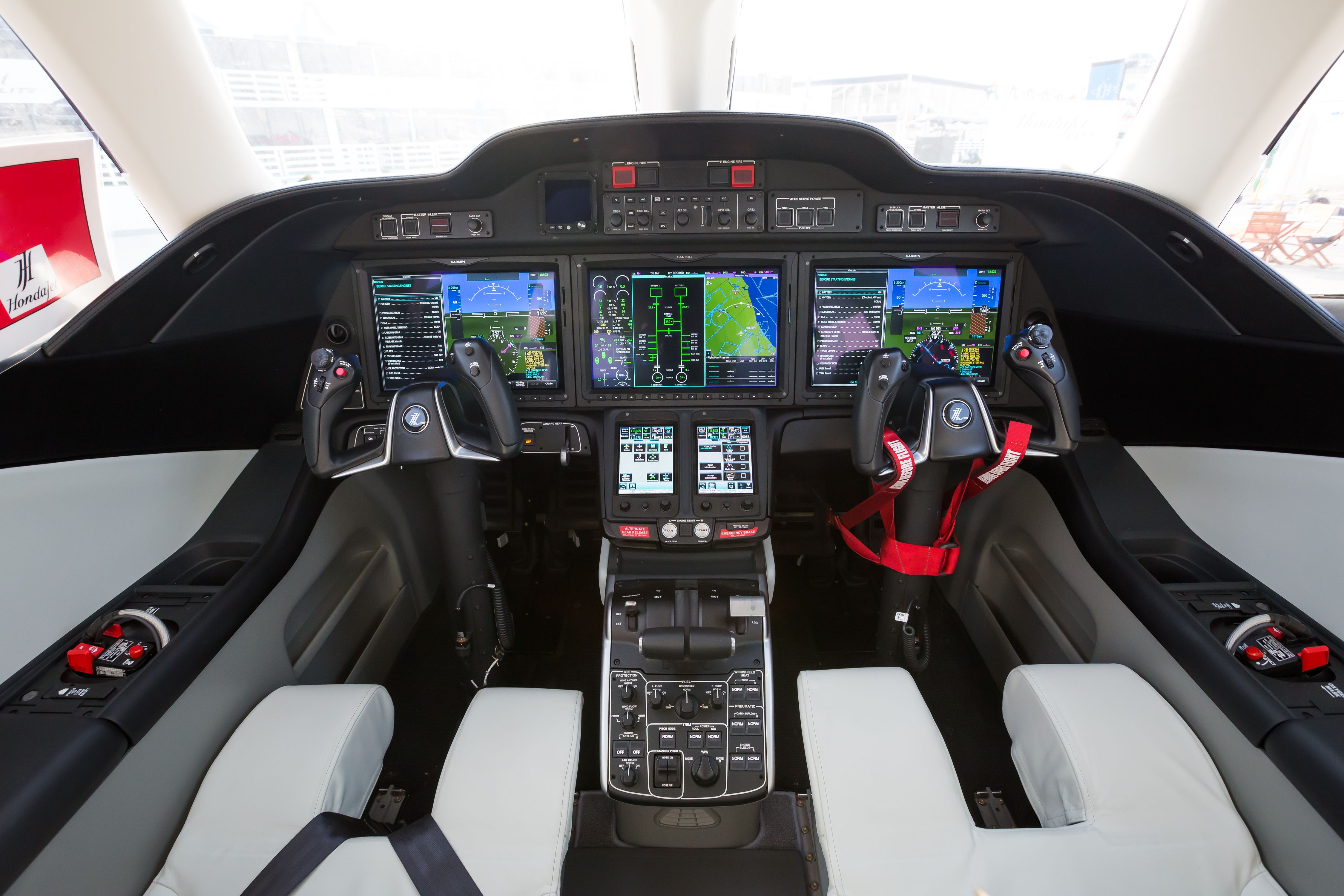
Upgraded Cabin: 5 Unique Features Of A HondaJet Cockpit
Its cockpit features significantly improve pilots’ situational awareness.
What are your thoughts on the design and performance characteristics of HondaJet? Share your views in the comments section.


